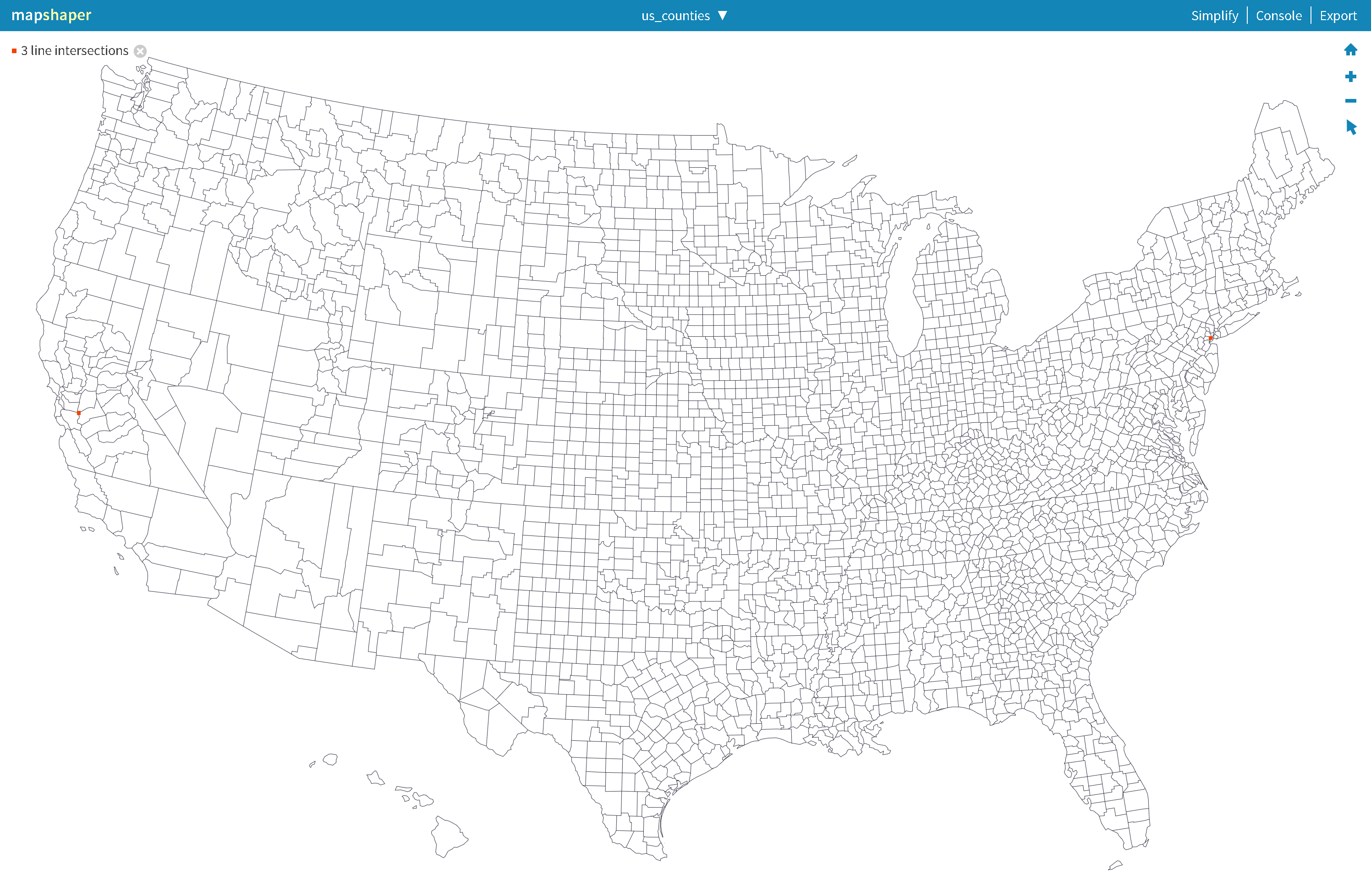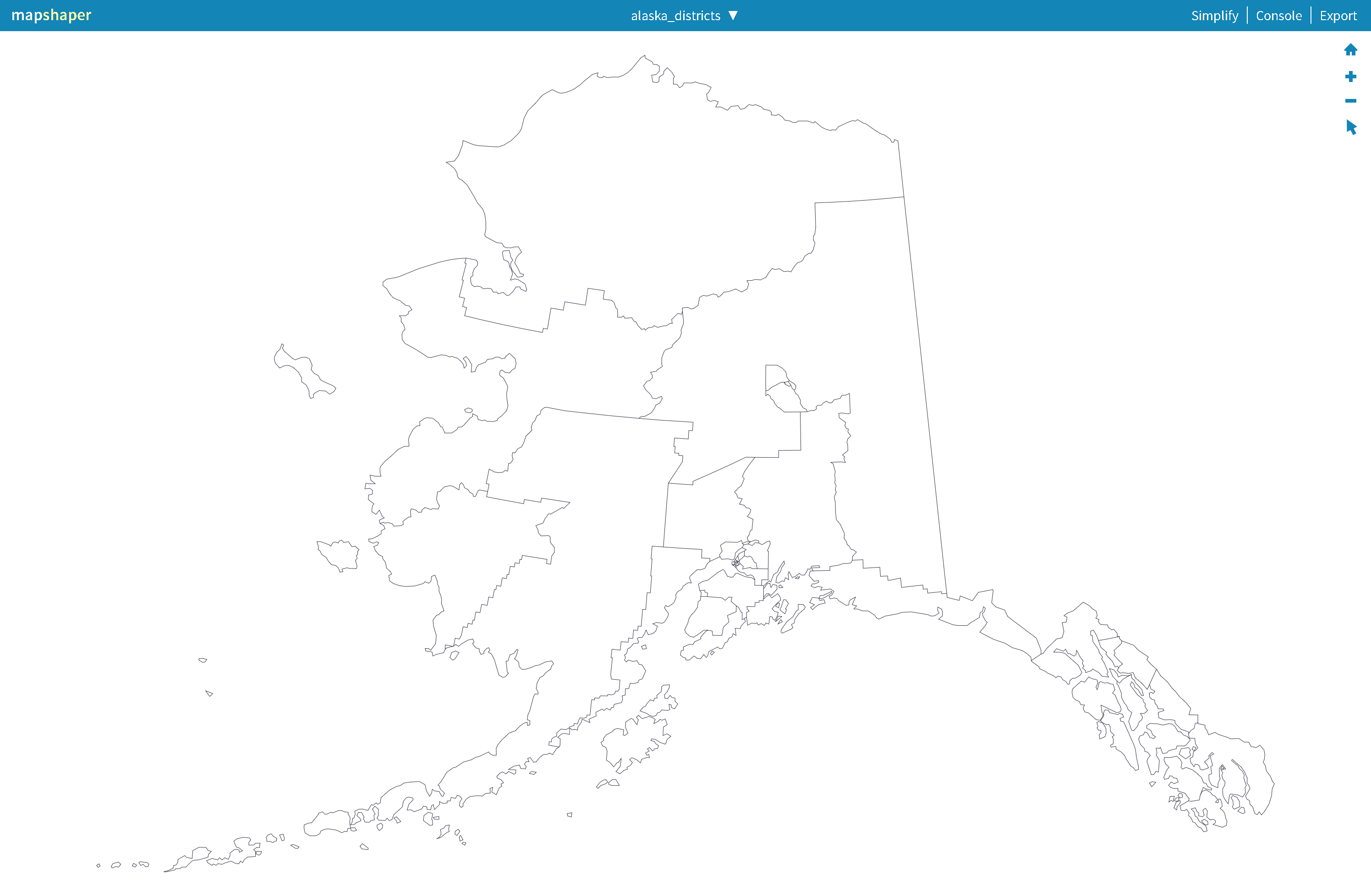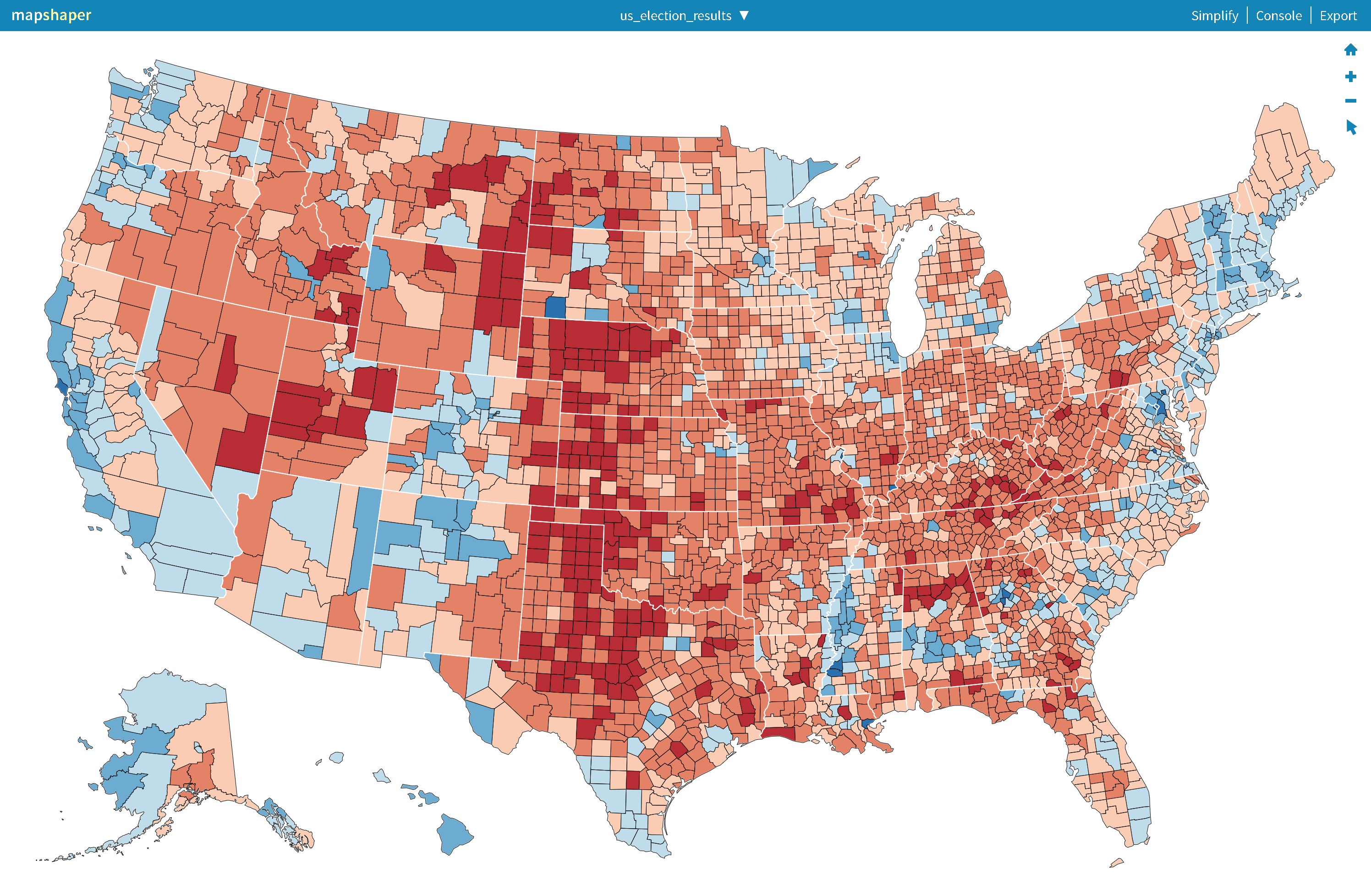This GitHub repository provides county-level U.S. presidential election results for the years 2008, 2012, 2016, 2020, and 2024. The data comes from various reputable sources, including The Guardian, Townhall.com, Fox News, Politico, and the New York Times. While the results are exhaustive, they are not authoritative. The repository compiles these results to support academic research and analysis, offering both interactive and static visualizations of the election data.
This GitHub repository serves as a comprehensive collection of U.S. presidential election results at the district or county level for the 2008, 2012, 2016, 2020, and 2024 elections. It draws from multiple trusted sources:
- 2008: Compiled by Bill Morris.
- 2012: Extracted from an Excel file published by The Guardian, inspired by a tweet to John A Guerra Gomez.
- 2016: Data scraped from Townhall.com, inspired by a tweet to DJ Patil.
- 2020: Data scraped from Fox News, Politico, and the New York Times.
- 2024: Data scraped from Fox News.
Although the data in this repository is extensive, it is not considered the authoritative source. Researchers are encouraged to verify specific results from primary data sources when needed.
Additionally, the repository includes tools for visualizing presidential election results. Tony McGovern developed both an interactive map and static maps of the 2024 presidential election results. Instructions to create these static maps are also provided, making it easier for academics to analyze and present the data in a visual format.
This repository compiles various U.S. presidential election results at the county level for all states, except Alaska and Washington, D.C., where results are reported at the house district and ward level, respectively. Each result is linked to a specific geography using a unique 5-digit FIPS code, assigned by the U.S. Census Bureau's Geography Division. For more on FIPS codes, see this page.
In this section, we bind 2024 election results to U.S. cartographic boundaries and convert them into a web-friendly format. We use the Mapshaper Command Line Tool to create both choropleth and dot density maps.
- Create a directory to hold cartographic boundary files for all election year results within this repository
mkdir cartography
cd cartography
mkdir 2024 2020 2016 2012 2008
- Navigate to the
/2024directory
cd 2024
- Download and unzip U.S. county cartographic boundary files
curl 'https://www2.census.gov/geo/tiger/GENZ2023/shp/cb_2023_us_county_500k.zip' \
-o cb_2023_us_county_500k.zip
unzip cb_2023_us_county_500k.zip
- Input the U.S. county shapefile
- Filter out certain states, including Alaska -- which we will process separately -- and other U.S. protectorates that we do not have data for
- Create the following new properties:
geoid: combination ofSTATEFPandCOUNTYFP, or FIPS codestate_fips: two digit state FIPS code based onSTATEFPcounty_name: name of the county based onNAME
- Filter out all other fields
- Simplify the layer using the default algorithm, retaining 2% of removable vertices
- Convert the Shapefile into the Albers USA projection
- Output a TopoJSON file named
us_counties.json
mapshaper \
-i cb_2023_us_county_500k.shp name=us_counties \
-filter 'STATEFP !== "02" && STATEFP !== "69" && STATEFP !== "66" && STATEFP !== "78" && STATEFP !== "60" && STATEFP !== "72"' \
-each 'geoid=STATEFP + COUNTYFP,state_fips=STATEFP,county_name=NAME' \
-filter-fields 'geoid,state_fips,county_name' \
-simplify 2% \
-proj albersusa \
-o format=topojson us_counties.json \
-o format=geojson us_counties.geojson
The result of these commands should output a TopoJSON file that looks like the image below. Notice how Alaska is missing from this image:

Alaska administers presidential elections at the house district-level, not the county-level like other U.S. states. To display results for Alaska, cartographic boundary files for its 40 districts must be downloaded and processed separately from the county-level data.
- Download and unzip Alaska lower chamber legislative district cartographic boundary files
curl 'https://www2.census.gov/geo/tiger/GENZ2023/shp/cb_2023_02_sldl_500k.zip' \
-o cb_2023_02_sldl_500k.zip
unzip cb_2023_02_sldl_500k.zip
We now translate and assign each of these 40 house districts a unique FIPS code defined the following way:
- ssSdd, where ss is the state FIPS code, S is a catch-all statewide code, and dd is the house district.
For example, the FIPS code attached to election results for Alaska House District 01 is 02001: '02' represents the state FIPS code for Alaska, '0' is a catch-all statewide code, and '01' represents House District 01.
Each house district in the shapefile has properties like a unique identifier, district number, and geographic details. Our goal is to add properties that uniquely link 2024 presidential election results to Alaska's geographic layer.
- Input the Alaska House District shapefile
- Create the following new properties:
district_n: a unique, zero-padded, two-digit Alaska House District number based on theSLDLSTpropertycounty_name: combination of "House District " anddistrict_nstate_fips: the state FIPS code given bySTATEFPstate_name: "Alaska"geoid: combination ofstate_fips, "9", anddistrict_n
- Filter out all other fields
- Simplify the layer using the default algorithm, retaining 2% of removable vertices
- Convert the Shapefile into the Albers USA projection
- Output a TopoJSON file named
alaska_districts.json
mapshaper \
-i cb_2023_02_sldl_500k.shp name=alaska_districts \
-each 'district_n=Number(SLDLST).toString().length === 2 ? Number(SLDLST).toString() : new Array(2 - Number(SLDLST).toString().length + 1).join("0") + Number(SLDLST).toString(),county_name="House District " + district_n,state_fips=STATEFP,state_name="Alaska",geoid=state_fips + "9" + district_n' \
-filter-fields 'geoid,state_fips,county_name' \
-simplify 2% \
-proj albersusa \
-o format=topojson alaska_districts.json \
-o format=geojson alaska_districts.geojson
The result of these commands should output a TopoJSON file that looks like the image below:

In this section, we create create a single TopoJSON file combining geometry from us_counties.json and alaska_districts.json, coloring regions by 2024 election results using Red-Blue quantiles, and showing county, state, and national boundaries. We also generate an SVG to display these results.
- Download 2024 U.S. county-level election results
curl 'https://raw.githubusercontent.com/tonmcg/US_County_Level_Election_Results_08-24/master/2024_US_County_Level_Presidential_Results.csv' \
-o 2024_data.csv
- Combine and merge the
alaska_districts.jsonandus_counties.jsonlayers into a new layer - Add DOM attributes to the county-level output, inlcuding stroke, stroke-width, and class
- Output a new
us_district_boundaries.jsonTopoJSON file - Input the
us_district_boundarieslayer - Using the
-dissolvecommand withstate_fipsas the field to dissolve on, this step merges adjacent polygons on thestate_fipslayer, thereby erasing shared boundaries and showing only the state-level boundaries - Add DOM attributes to the state-level output, inlcuding stroke, stroke-width, and class
- Output a new
us_state_boundaries.jsonTopoJSON file - Input the
us_state_boundarieslayer - Using the
-dissolvecommand with no named input fields to dissolve on, this step merges adjacent polygons for the entire layer, thereby erasing all shared boundaries and showing only the national-level boundary - Add DOM attributes to the national-level output, inlcuding stroke, stroke-width, and class
- Output a new
us_boundaries.jsonTopoJSON file - Input the
us_district_boundaries.jsonTopoJSON file. We name the layerus_election_districts - Input the
2024_data.csvfile, containing the county-level results of the 2024 presidential election - Join the election data on to the
us_election_districtslayer - Use the
-colorizercommand to create a JavaScript function that accepts a numerical input and returns a color defined by a quantized range of values - Assign the returned color as the value in
fillDOM attribute - Ouptut a new
us_election_districtsTopoJSON file - Combine and merge the
us_election_districts.json,us_state_boundaries.json, andus_boundaries.jsonlayers into a new layer - Output a new
us_election_resultsTopoJOSN file - Output a new
us_election_resultsSVG file
mapshaper \
-i alaska_districts.geojson us_counties.geojson combine-files name=us_district_boundaries\
-merge-layers \
-style class="county" stroke="#000000" fill="none" stroke-width="0.1" \
-o format=topojson us_district_boundaries.json \
-o format=geojson us_district_boundaries.geojson \
-i us_district_boundaries.geojson name=us_state_boundaries \
-dissolve state_fips \
-style class="state" stroke="#ffffff" fill="none" stroke-width="1" \
-o format=topojson us_state_boundaries.json \
-o format=geojson us_state_boundaries.geojson \
-i us_district_boundaries.geojson name=us_boundaries \
-dissolve \
-style class="us" stroke="#000000" fill="none" stroke-width="0.5" \
-o format=topojson us_boundaries.json \
-o format=geojson us_boundaries.geojson \
-i us_district_boundaries.geojson name=us_election_districts \
-i 2024_data.csv string-fields=county_fips name=2024_data \
-join target=us_election_districts 2024_data keys=geoid,county_fips \
-colorizer name=getColor colors='#2A71AE,#6BACD0,#BFDCEB,#FACCB4,#E48268,#B82D35' breaks=0.1667,0.3334,0.5,0.6667,0.8334 \
-style fill='getColor(per_gop)' \
-o format=topojson us_election_districts.json \
-o format=geojson us_election_districts.geojson \
-i us_election_districts.geojson us_state_boundaries.geojson us_boundaries.geojson combine-files name=us_election_results \
-merge-layers force \
-o format=topojson us_election_results.json \
-o format=geojson us_election_results.geojson \
-o us_election_results.svg
The result of these commands should output a TopoJSON file that looks like the following:

Dot density maps are great for showing where things are concentrated. Instead of comparing vote counts between counties, the map below displays the total number of votes within each county. It highlights that most votes come from counties with large, urban populations.
mapshaper \
-i us_district_boundaries.geojson name=us_election_districts \
-points inner + name=dots \
-i 2024_data.csv string-fields=county_fips name=2024_data \
-filter-fields county_fips,votes_gop,votes_dem \
-each 'margin = votes_gop - votes_dem' \
-each 'abs_margin = Math.abs(margin)' \
-join target=dots 2024_data keys=geoid,county_fips \
-sort abs_margin descending \
-style r='Math.sqrt(abs_margin) * 0.02' \
-style opacity=0.5 fill='margin > 0 ? "#B82D35": "#2A71AE"' \
-lines state_fips target=us_election_districts \
-style class="county" stroke="#ddd" fill="none" stroke-width="0.1" where='TYPE === "inner"' \
-style class="us" stroke="#000000" fill="none" stroke-width="0.5" where='TYPE === "outer"' \
-style class="state" stroke="#000000" fill="none" stroke-width="0.5" where='TYPE === "state_fips"' \
-o us_dot_election_results.svg target=us_election_districts,dots
The result of these commands should output a SVG file that looks like the following:
